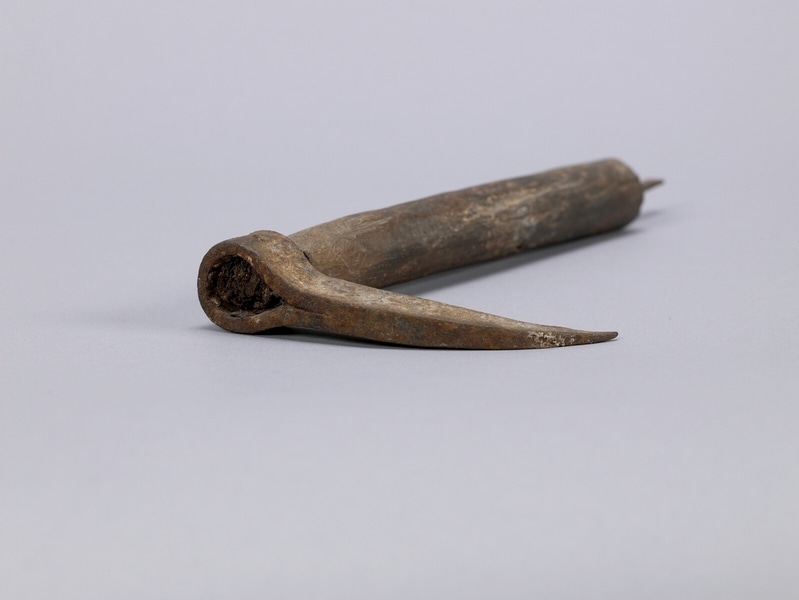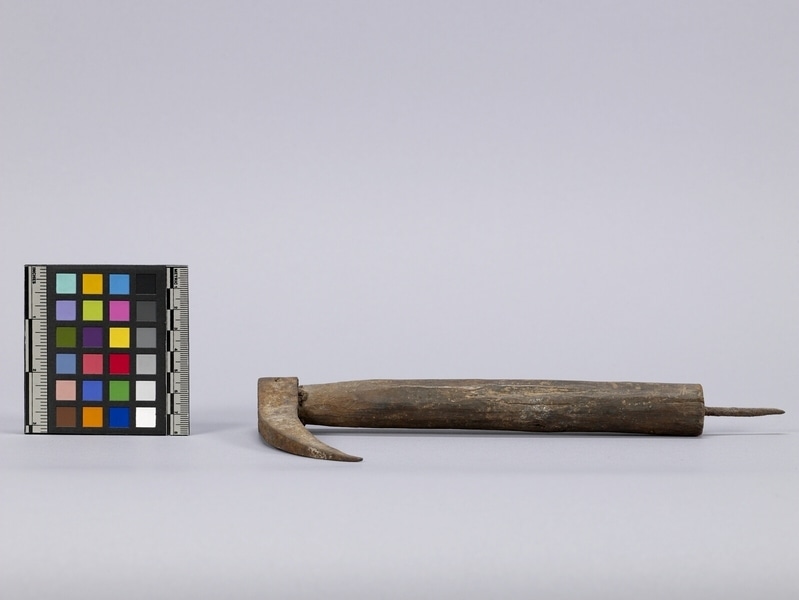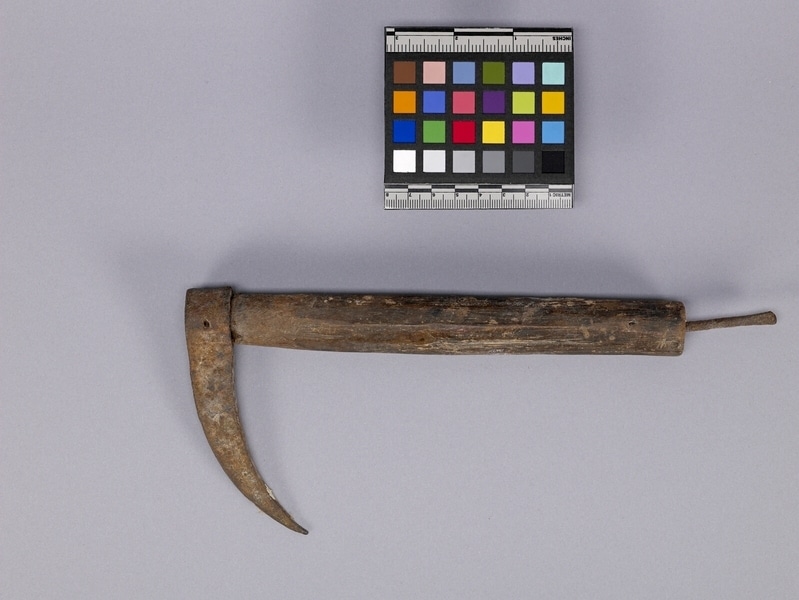Hook Item Number: Edz1106 from the MOA: University of British Columbia



Description
Small, pick-like metal tool; gently curved metal piece attached to the top of a straight wooden handle. A short, straight piece of metal protrudes from the bottom of the handle.
History Of Use
Tsuen Wan District is located on a bay, and some of the more fortunate villages were located near the water, although others were on the hillsides. The central part of Tsuen Wan began to industrialize on a large scale after World War II, and especially in the 1960s. Until that time, people in the coastal villages made use of marine resources, although people some others traveled considerable distances to have access to them. Some Tsuen Wan people lived by fishing as well as farming, but it was also common for people to gather marine resources such as oysters and snails for their family’s consumption. Hooks like this were used to gather oysters, the hook part being used to pry the oyster loose and the spike to pry it from its shell. After the mid-twentieth century the New Territories of Hong Kong began to undergo fundamental changes. The people who had been settled there before 1898, when the British colonizers claimed the area, began to give up rice agriculture and coastal fishing, turning instead to wage labour and increased employment overseas. By the end of the century, educational opportunities leading to the possibility of white-collar work also increased, together with western influences. In Tsuen Wan, as industrialization increased and the population grew exponentially, much of the bay was reclaimed and it was also polluted by industrial effluent. This made the gathering of marine resources impossible and tools like this one lost their former usefulness. Twentieth-century changes meant that objects and clothing once useful and appropriate were no longer needed and generally were discarded. Some were saved by their owners, who sometimes were willing to donate them to museums, sharing, also, their knowledge of how they were made and used.
Narrative
This tool is typical of those used in Tsuen Wan, and is smaller than those used to gather the large farmed oysters grown elsewhere in the New Territories. Hakka people are one of the two original land-dwelling groups that settled the area that became the New Territories of Hong Kong. Their spoken language, and some customs, differed from those of the other original group, the Cantonese or Punti. The Cantonese arrived first and settled on the best rice-growing lands, while the Hakka began to arrive after the late 17th century and settled the more hilly lands.
Item History
- Made in Tsuen Wan, Hong Kong, China
- Collected by Elizabeth L. Johnson during 1979
- Owned by Shui-cheung Yau
- Owned by Elizabeth L. Johnson before March 17, 1980
- Received from Elizabeth L. Johnson (Seller) and Museum of Anthropology Shop Volunteers (Funding source) on March 17, 1980
What
Who
- Culture
- Chinese: Hakka
- Field Collector
- Elizabeth L. Johnson
- Previous Owner
- Shui-cheung Yau and Elizabeth L. Johnson
- Received from
- Elizabeth L. Johnson (Seller) and Museum of Anthropology Shop Volunteers (Funding source)
Where
- Holding Institution
- MOA: University of British Columbia
- Made in
- Tsuen Wan, Hong Kong, China
When
- Collection Date
- during 1979
- Ownership Date
- before March 17, 1980
- Acquisition Date
- on March 17, 1980
Other
- Item Classes
- metalwork
- Condition
- fair
- Accession Number
- 0610/0076